Active Public Space is a ten week-long design studio as a speculation on the traffic-free future of the main public plazas of Barcelona. With three vectors, Energy, Technology and Society, the studio explored a bottom-up design strategy rooted in automatic and in-deterministic processes, initially in drawing, then as a mean to program and activate public space.
Project: Glories Regenerative Systems
Could Plaza de Glories, a space regulated by transport infrastructure become, in the next 40 years, the city´s central waste management hub where waste would serve to construct configurations of a public space for the citizen?
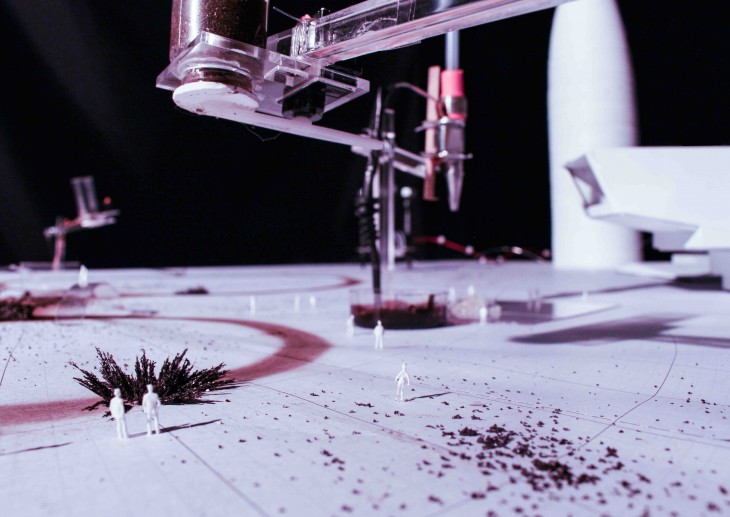
By intersecting the three major roads of Barcelona at this traffic node, Cerda planned Plaza de Glories to be the city’s ‘new urban center’. Though Glories remained underdeveloped due to a lack of public and commercial program, instead acting as a space regulated by transport infrastructure. The plaza is unable to function as a unified and occupiable public space due to the sectioning of the major roads, creating a barrier to pedestrian circulation via spatial and occupational division. It is also an expansive plane with scarce shelter, with few facilities for communal or recreational use, locals do not identify Glories to communal space. The plaza currently houses the Encants second hand market, The Disseny Hub Design Museum, the landmark that is Torre Agbar, a modern shopping center and is surrounded with residential neighborhoods. To create a link between these structures, address urban disjunction, and lack of public activity, Glories Regenerative Systems is a design solution to Barcelona’s waste accumulation and energy consumption, as well as a sustainable alternative to the mass transportation of products.
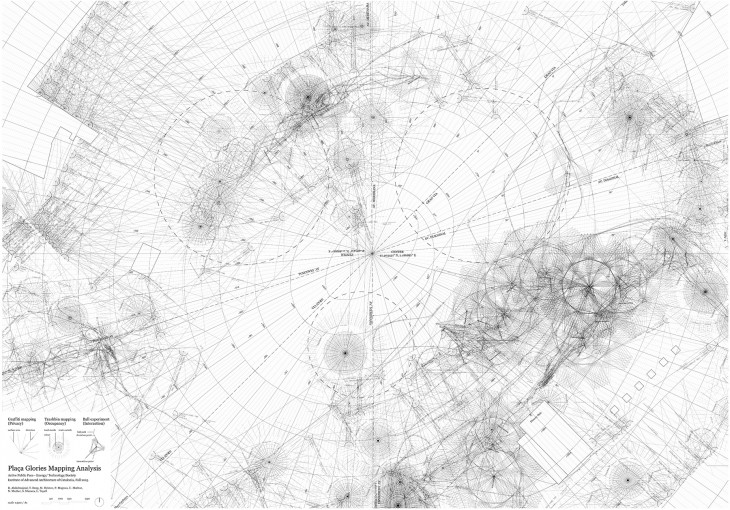
As city waste is collected at Plaza Glories, it is first separated into usable and unusable items, the objects that can be reused will be fixed at the Plaza’s introduced repair shop and sent to Encants market to be redistributed. The design intervention then consists of an automatic filtration system: separating electronics, organics, plastics, papers and metals. Each of which are sent to their appropriate stations to be transformed from waste to usable material, which will then be digitally fabricated by users to create new infrastructure or building blocks for the Plaza itself. The full cycle of the filtration system is symbolically represented by circles, and the station areas are determined via the data mapping of existing occupation, interaction and visibility conditions of Glories.
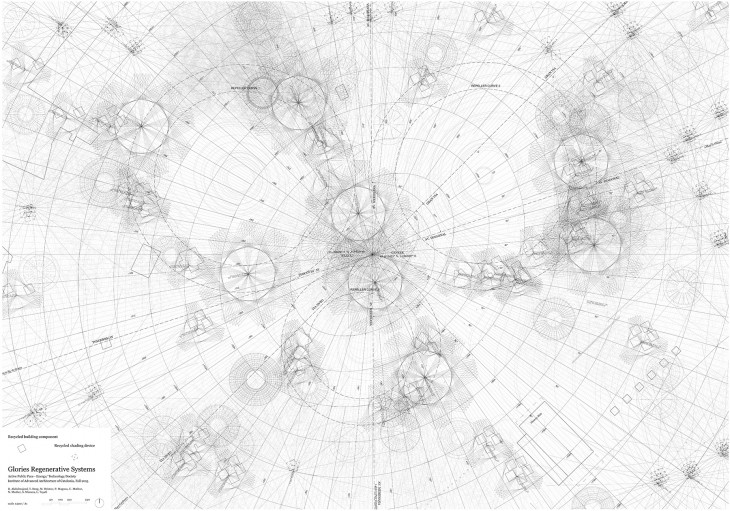
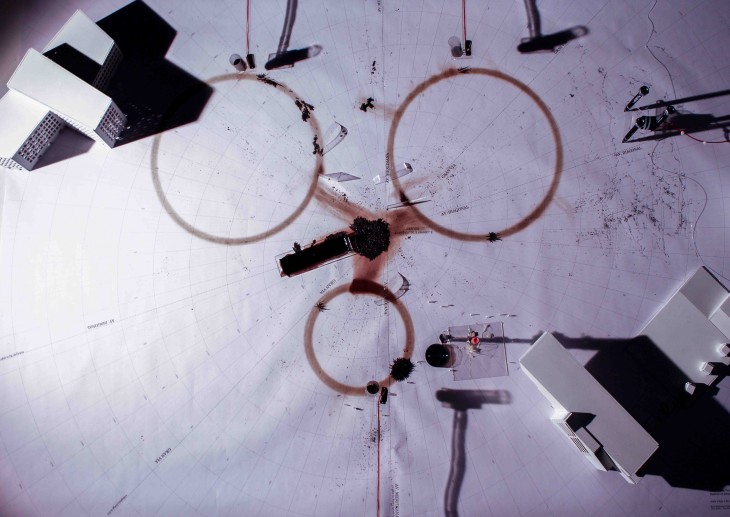
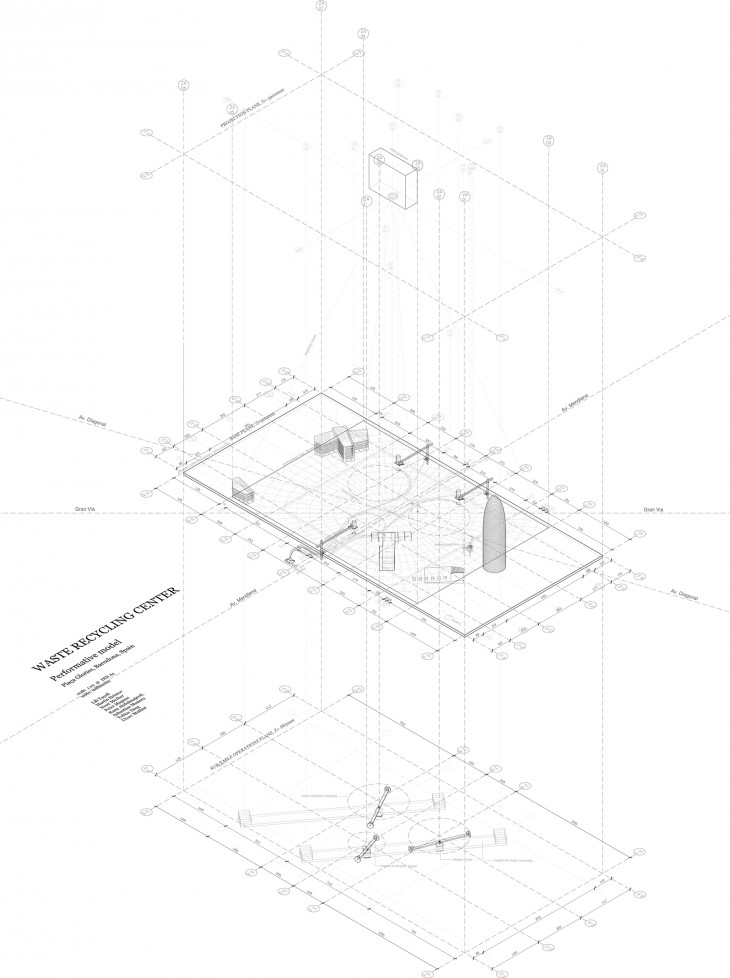
Design outputs include: plastics and metals combined to create a bicycle selling and repair shop, 3D printed plastic panels for a large scale aquaponics system generating a vertical community garden to grow food for locals near the northern residential side of the plaza, as well as digitally fabricated shading structures placed in the more interactive areas throughout the plaza. The space and program will be an open source design welcoming the community’s participation including a centralized stage for projected movies and dining to further transform Glories into a destination rather than a transitionary zone.
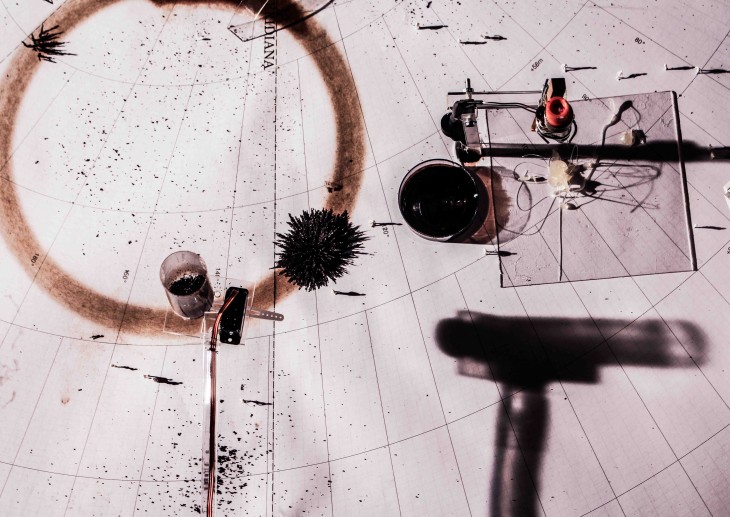
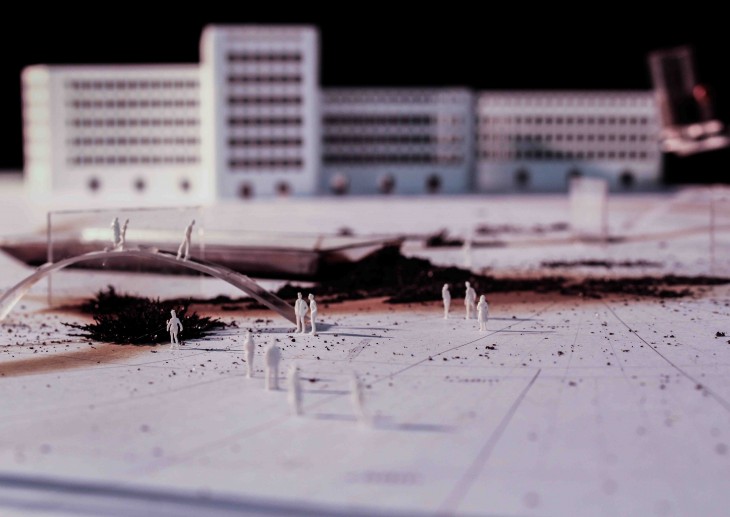
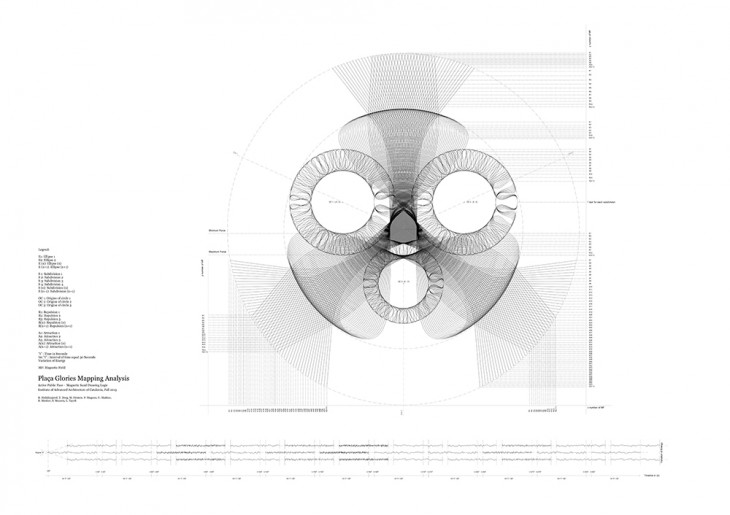
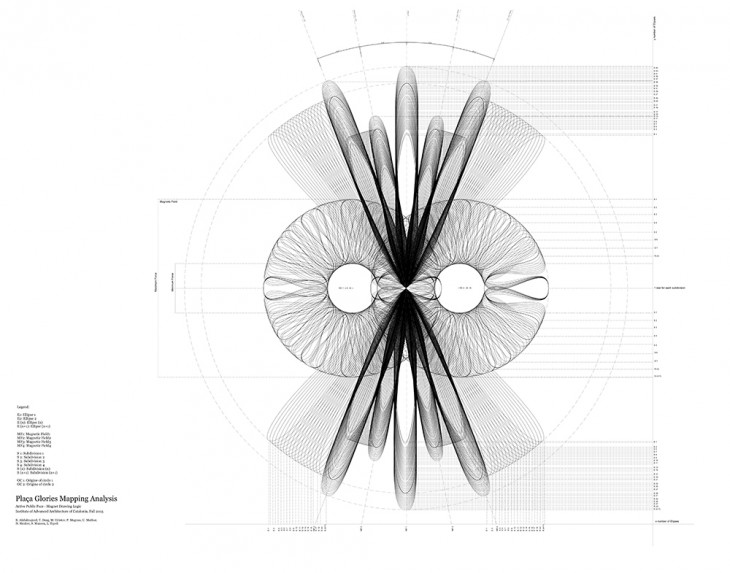
By exhibiting a process that is normally hidden, the project seeks to provide a knowledge and communication platform as well as an economic and technological framework for the transformation of waste into digitally fabricated structures using automated machines. The physical, functional and spatial manifestation of which will be developed by public interaction as well as the participation in open design projects and competitions. Programs as well as spacial qualities and physical structures will be subject to a morphological process adapted to the desires of those who occupy the space. Although basic functional systems, programmatic organisations and circulation logics are implied in the proposal, they can be seen merely as a breeding ground for the subsequent development of a living public space. This space will be of democratic and evolutionary rather than authoritarian and of anecdotal nature.
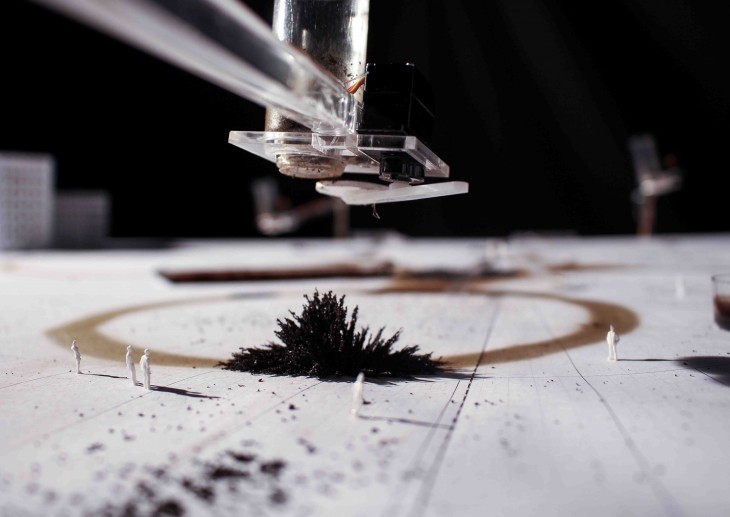
Active Public Space – Glories Regenerative Systems is a project of IaaC, Institute for Advanced Architecture of Catalonia, developed at Master in Advanced Architecture in 2015/2016 by:
Students: Peter Geelmuyden Magnus, Utsav Mathur, Tobias Deeg, Martin Hristov, Rana Abdulmajeed, Nour Mezher, Jean Sebastian Munera, Lili Tayefi
Faculty: Edouard Cabay, Rodrigo Aguirre
With help from: Angel Muñoz, Pablo Barquin, Carmen Aquilar Wedge, Ramin Shambayati.